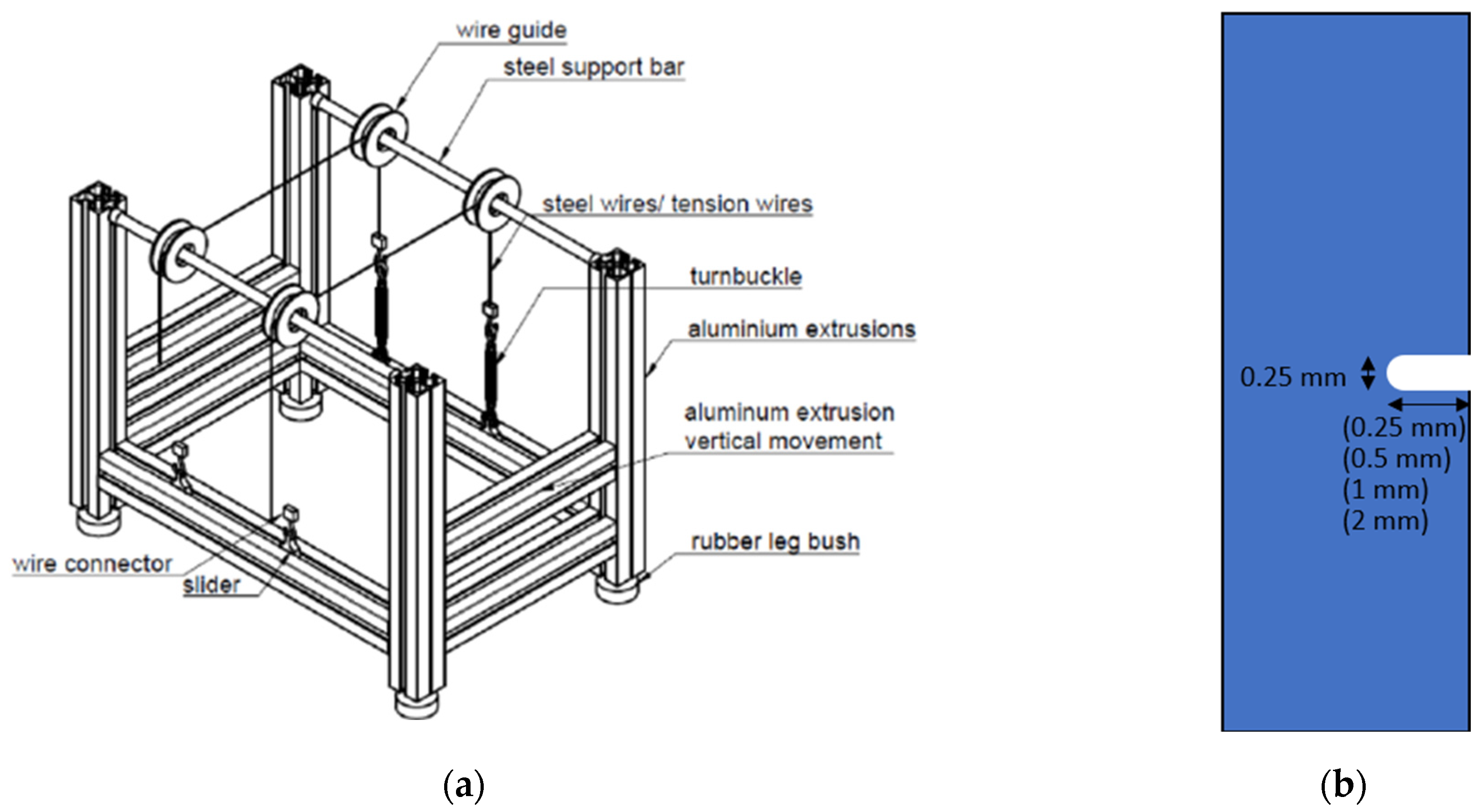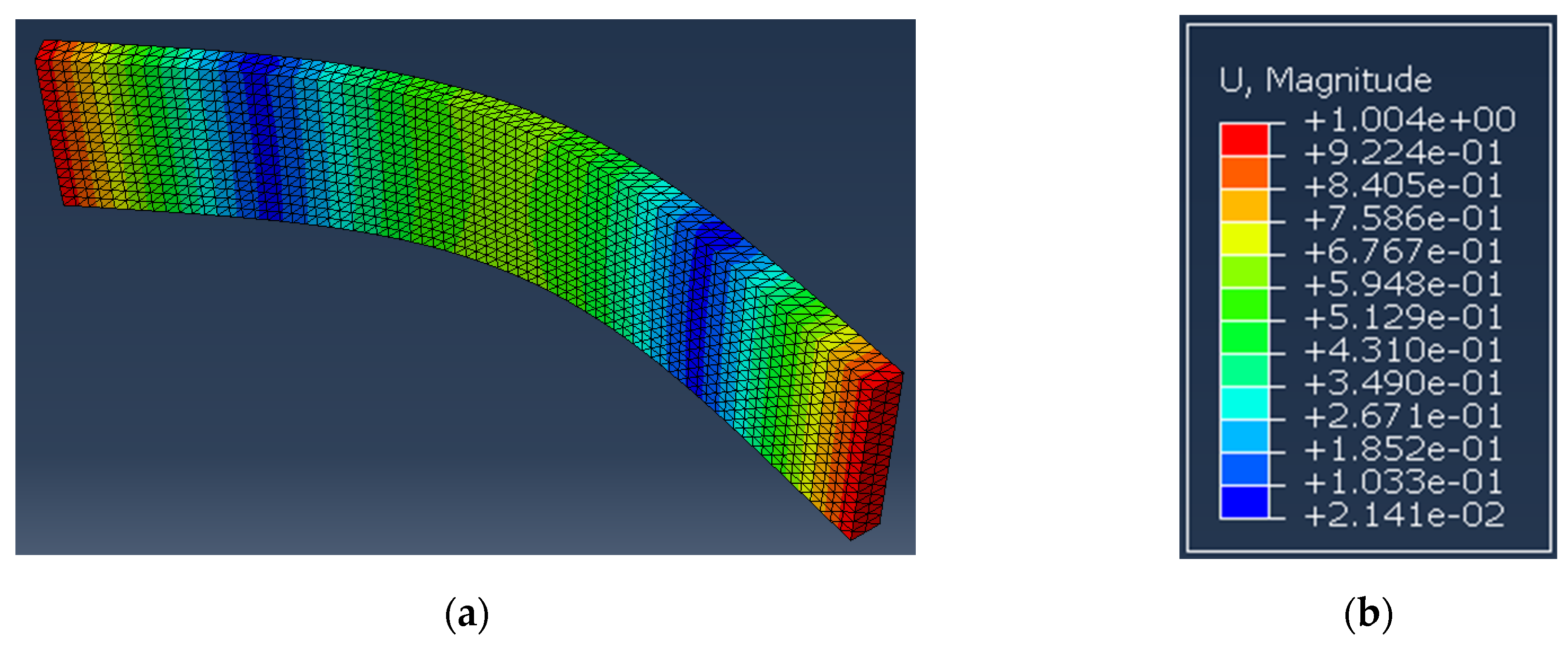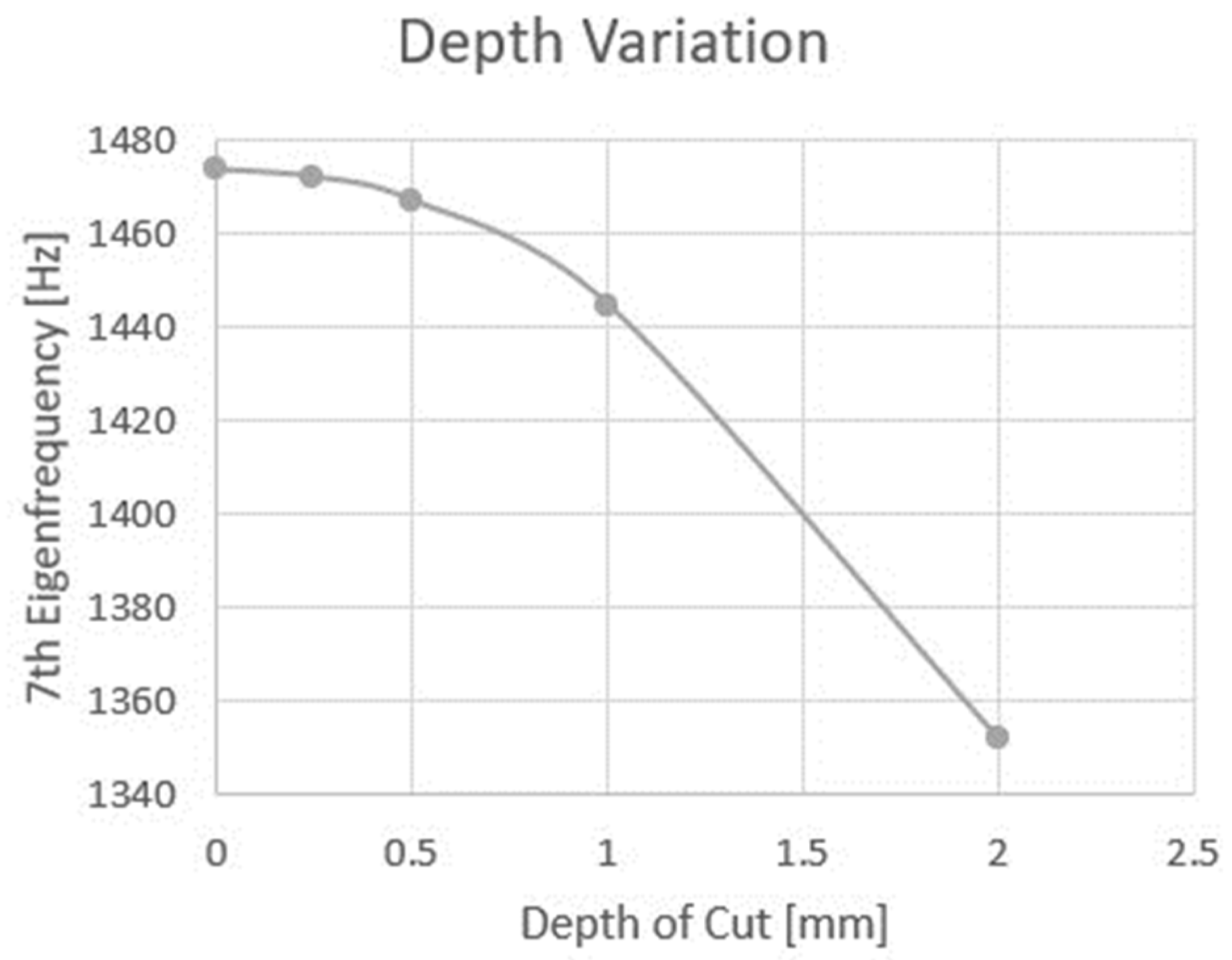Examining the Feasibility of Acoustic Resonance Testing (ART) for Quality Control in Manufacturing †
Abstract
1. Introduction
2. Methods
2.1. Sensitivity Analysis in FEA
2.2. Experimental Approach
3. Results
3.1. Sensitivity of Geometric Variations in FEA
3.2. Sensitivity of Crack Depth in FEA
3.3. ‘Heat Map’ of Defect Position in FEA
3.4. Numerical and Experimental Results
4. Discussion
Author Contributions
Funding
Institutional Review Board Statement
Informed Consent Statement
Data Availability Statement
Acknowledgments
Conflicts of Interest
References
- Schwarz, J.J.; Rhodes, G.W. Resonance Inspection for Quality Control. In Review of Progress in Quantitative Nondestructive Evaluation; Thompson, D.O., Chimenti, D.E., Eds.; Plenum Press: New York, NY, USA, 1996; Volume 15, pp. 2265–2271. [Google Scholar] [CrossRef][Green Version]
- DGZfP-Richtlinie US 6. Akustische Resonanzverfahren zur Zerstörungsfreien Prüfung: Prinzip, Vorgehensweise, Merkmale, Validierung; Deutsche Gesellschaft für Zerstörungsfreie Prüfung e.V.: Berlin, Germany, 2009; ISBN 978-3-940283-23-8. [Google Scholar]
- Lai, C.; Sun, X.; Dasch, C.; Harmon, G.; Jones, M. Quantify Resonance Inspection with Finite Element-Based Modal Analyses. J. Vib. Acoust. 2011, 133, 031004. [Google Scholar] [CrossRef]
- Hertlin, I. Acoustic Resonance Analysis Using FEM and Laser Scanning For Defect Characterization in In-Process NDT. In Proceedings of the 9th European Conference on Non-Destructive Testing (ECNDT), Berlin, Germany, 25–29 September 2006. [Google Scholar]
- Heinrich, M.; Rabe, U.; Valeske, B. Simulation-based generation and valid training data for acoustic resonance testing. Appl. Sci. 2020, 10, 6059. [Google Scholar] [CrossRef]
- Heinrich, M.; Valeske, B.; Rabe, U. Efficient detection of defective parts with acoustic resonance testing using synthetic training data. Appl. Sci. 2022, 12, 7648. [Google Scholar] [CrossRef]



| Simulation | Test-Rig | Suspended |
| 1473.4 Hz | 1505.9 Hz | 1507 Hz |
Disclaimer/Publisher’s Note: The statements, opinions and data contained in all publications are solely those of the individual author(s) and contributor(s) and not of MDPI and/or the editor(s). MDPI and/or the editor(s) disclaim responsibility for any injury to people or property resulting from any ideas, methods, instructions or products referred to in the content. |
© 2024 by the authors. Licensee MDPI, Basel, Switzerland. This article is an open access article distributed under the terms and conditions of the Creative Commons Attribution (CC BY) license (https://creativecommons.org/licenses/by/4.0/).
Share and Cite
Braun, N.; Kennedy, J.; Lishchenko, N.; O’Donnell, G.E. Examining the Feasibility of Acoustic Resonance Testing (ART) for Quality Control in Manufacturing. Eng. Proc. 2024, 65, 10. https://doi.org/10.3390/engproc2024065010
Braun N, Kennedy J, Lishchenko N, O’Donnell GE. Examining the Feasibility of Acoustic Resonance Testing (ART) for Quality Control in Manufacturing. Engineering Proceedings. 2024; 65(1):10. https://doi.org/10.3390/engproc2024065010
Chicago/Turabian StyleBraun, Niklas, John Kennedy, Natalia Lishchenko, and Garret E. O’Donnell. 2024. "Examining the Feasibility of Acoustic Resonance Testing (ART) for Quality Control in Manufacturing" Engineering Proceedings 65, no. 1: 10. https://doi.org/10.3390/engproc2024065010
APA StyleBraun, N., Kennedy, J., Lishchenko, N., & O’Donnell, G. E. (2024). Examining the Feasibility of Acoustic Resonance Testing (ART) for Quality Control in Manufacturing. Engineering Proceedings, 65(1), 10. https://doi.org/10.3390/engproc2024065010







